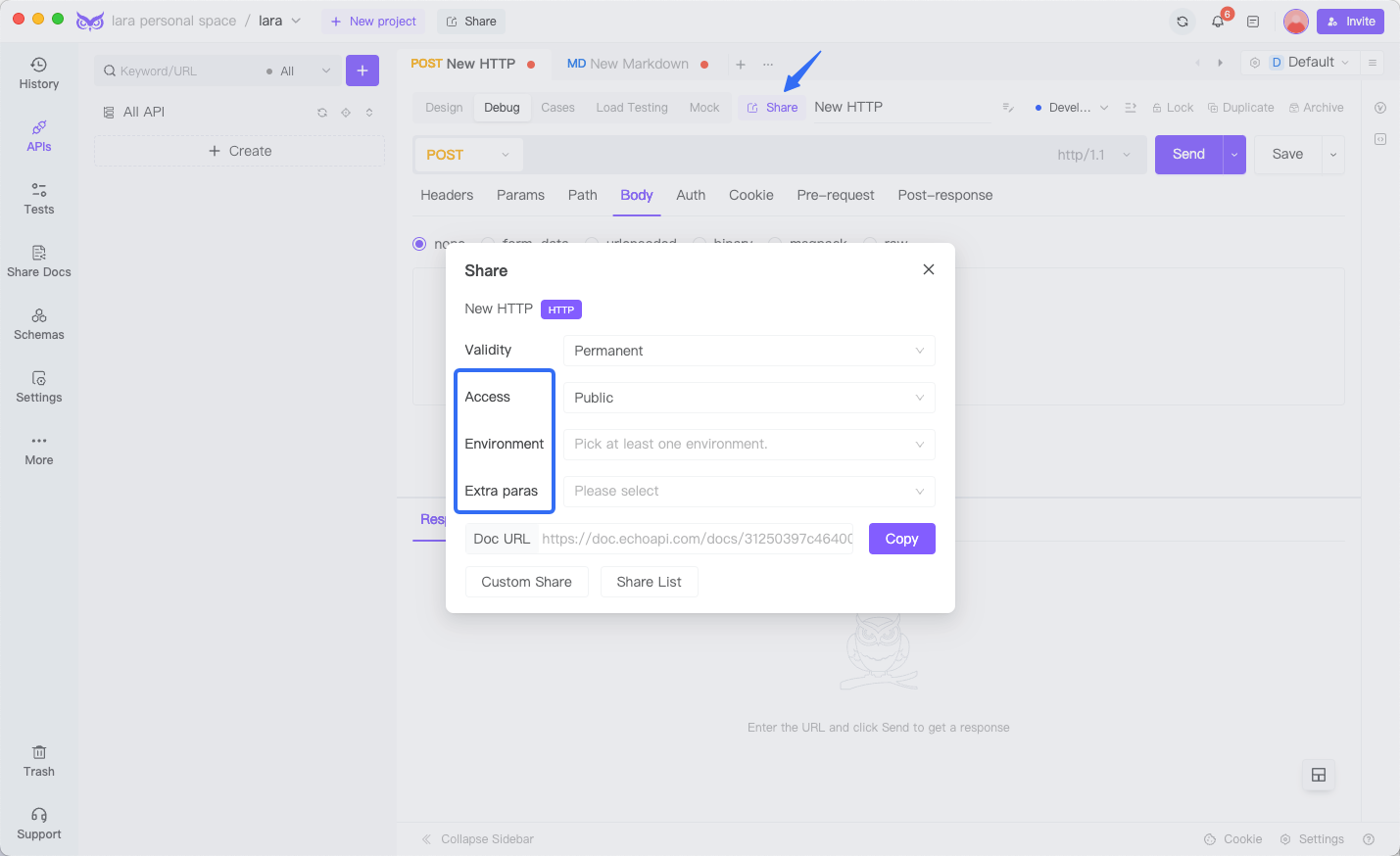From Postman to EchoAPI: Revolutionizing the Documentation Experience with One-Click Generation
Challenges Encountered in Work
During a recent large-scale e-commerce platform development project, I deeply experienced the complexity of API documentation generation and management. This project required our backend team to develop dozens of API endpoints to support a range of core functionalities, including product browsing, searching, ordering, and payment. As a backend developer, I initially used Postman to test and document these APIs.
In the early stages of development, after completing each API, I would carefully organize information such as request methods, headers, bodies, parameter descriptions, and response examples in Postman, and manually write API documentation. However, as the number of APIs increased and functionalities iterated, this process became exceedingly tedious. Every time an API was updated, I had to individually modify the corresponding documentation, consuming a significant amount of time and effort.
More troublingly, due to the complexity of manual editing, errors frequently appeared in the documentation. Sometimes, inconsistencies in API information arose from oversights during copying and pasting. Other times, the frontend team used outdated API information due to delays in updating the documentation. These issues were only discovered during the testing phase or before going live, severely impacting the project schedule and even requiring emergency overtime to fix.
The Debut of EchoAPI's "One-Click Documentation Generation"
It was in this context that I encountered EchoAPI and its impressive one-click documentation generation feature. This feature allows developers to automatically generate clear and standardized API documentation through simple operations after completing API testing and debugging.

The content edited and saved in the API design and API debugging modules can automatically generate an online interface document to be delivered to the front-end. This document includes all content such as interface information, request parameters, response examples, etc.

Directly on the interface page, after clicking the [Share Document] button, you can set sharing restrictions, such as password viewing, document validity period, development environment, interface extended attribute fields, and then share the link with others.

Specifically, the one-click documentation generation function automatically extracts key API information, including request methods, URL paths, request parameters, and response data, and formats it into an easy-to-read and understand document. This means I no longer need to manually organize and write these tedious details but can rely on EchoAPI to automatically generate accurate and professional API documentation.

The introduction of this feature has greatly simplified my workflow. I only need to define the API in EchoAPI, click one button to generate, and obtain a complete, structured document. This not only saves a lot of time spent on manually organizing documentation, but more importantly, it eliminates possible errors and inconsistencies in the manual editing process, ensuring the accuracy and reliability of the documentation.
For the entire team, EchoAPI's one-click documentation generation feature has also greatly improved collaboration efficiency. The frontend team can directly view and reference these automatically generated documents, reducing communication costs with our backend team. Everyone can quickly understand how to use the API and its expected behavior, accelerating the development process.
Conclusion
Overall, EchoAPI's one-click documentation generation feature has brought significant convenience and benefits to my e-commerce project. It not only solves the tedious and error-prone problems of manually organizing documentation but also generates high-quality, easy-to-understand API documentation through automation and customization. For those of us who pursue efficient development and team collaboration, this feature is undoubtedly a valuable asset.
The above images and usage content are excerpted from the official sources.




 EchoAPI for VS Code
EchoAPI for VS Code

 EchoAPI for IntelliJ IDEA
EchoAPI for IntelliJ IDEA

 EchoAPl-Interceptor
EchoAPl-Interceptor

 EchoAPl CLI
EchoAPl CLI
 EchoAPI Client
EchoAPI Client API Design
API Design
 API Debug
API Debug
 API Documentation
API Documentation
 Mock Server
Mock Server








